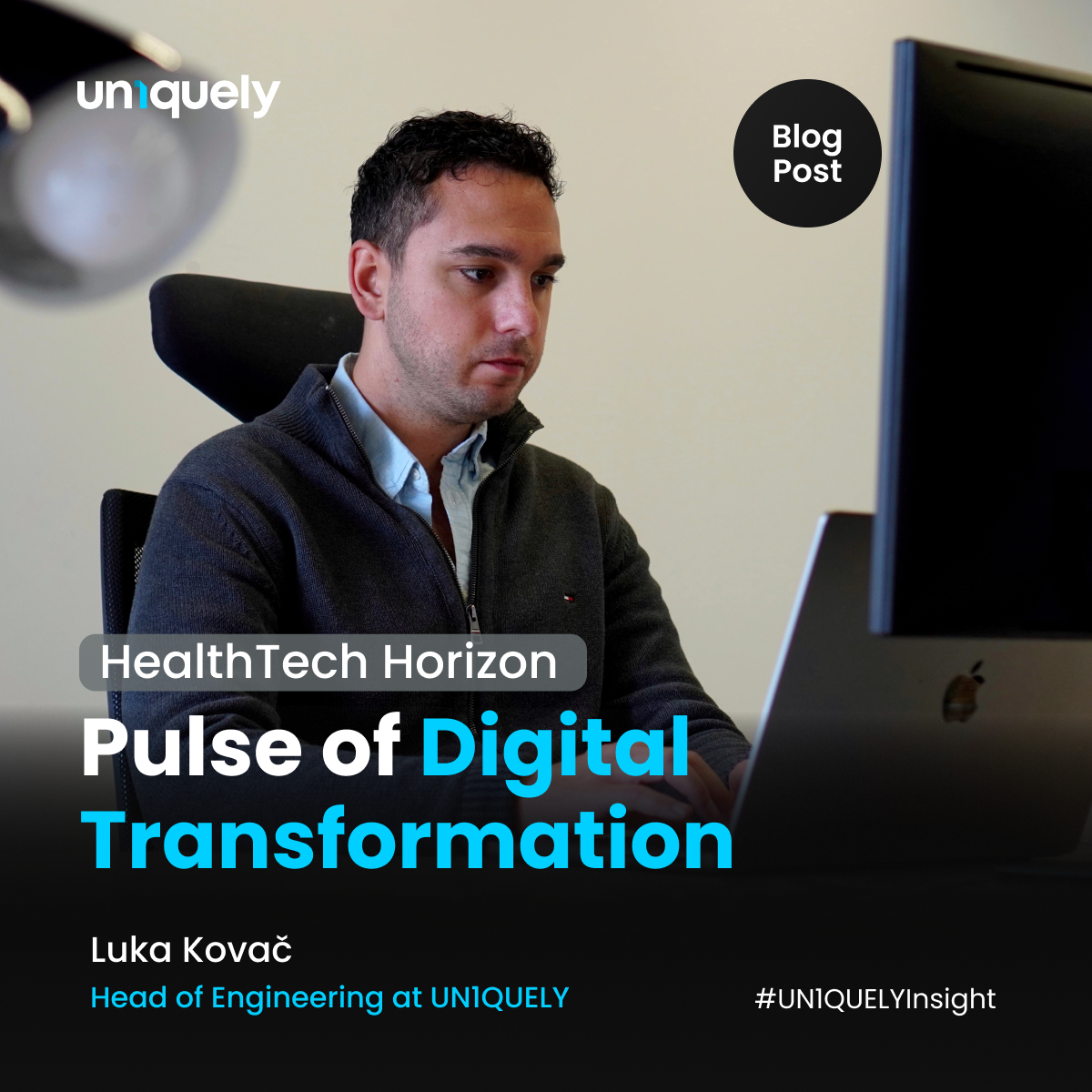The landscape of healthcare delivery is undergoing a significant transformation, as patient experiences and expectations continue to evolve. Major figures in the industry are progressively recognizing the potential of innovative approaches to improve patient outcomes.
In digital health, the opportunities span the full spectrum of patient pathways, from primary prevention and screening to diagnosis, treatment, and continuous monitoring. Digital technology promises to notably improve healthcare systems worldwide, not only by elevating the quality of care but also by reducing costs. Projected annual savings range between $1.5 to $3 trillion by 2030, fueled by advancements in remote monitoring, artificial intelligence, and automation. This shift signifies a major leap towards more efficient, effective, and patient-centered healthcare. [1]
Though the exact challenges may be uncertain, one thing is clear: technology is undoubtedly the key ally for healthcare in this era of transformation.
The Role of HealthTech in Modern Medicine
Our generation is fortunate to witness a truly remarkable change as technology transforms healthcare delivery through various channels. This revolution is particularly evident in the rising popularity of telemedicine—virtual consultations and remote healthcare services, a boon especially for rural areas with limited access to healthcare facilities.
Telemedicine provides patients with timely access to healthcare professionals, reducing the need for unnecessary hospital visits. Its impact goes beyond sheer convenience—it represents a shift toward democratizing health services, making them accessible to everyone, everywhere.
Telepsychiatry, a subset of telemedicine, exemplifies this change by offering evaluations, therapy, and medication management. It effectively reduces travel barriers, making healthcare more accessible to all. [2]
Telemedicine acts as a driving force, making screening processes more accessible and less intimidating for the general population. By combining telemedicine with self-sampling, a more patient-friendly and approachable system is created. This combination is likely to lead to higher participation rates in screenings, as it overcomes common barriers such as time constraints and discomfort with in-person appointments. For instance, research indicates that self-sampling is an effective method for encouraging women to participate in cervical cancer screening. [3]
Unbundling the concept further
This shift is not merely logistical but represents a paradigm shift in how clinical research is conceptualized and executed. Take, for example, decentralized clinical trials, where some or all of a clinical trial’s activities occur at locations other than the traditional clinical trial site. These alternate locations can include the participant’s home, a local healthcare facility, or a nearby laboratory. Thus, they overcome the challenges of traditional clinical trials, which are often limited to specific geographical regions, leading to a lack of participant diversity and increased operational complexities. [4]
Unsurprisingly, studies show that many clinical trial participants prefer receiving treatments at their homes or local clinics rather than traveling long distances to traditional clinical trial sites.
This has been made feasible thanks to emerging technologies that simplify the collection, transfer, and storage of electronic data. [5 – section C of the document]
Capturing the entire scope of change and transformation at once is difficult; therefore, I shall remain focused on a selected few examples to illustrate this transformation.
At the moment of writing this blog, we are developing two entirely in-house solutions. The first carries the ambitious goal of being the pioneer in bringing standard clinical whole blood tests into the convenience of a patient’s home. The second is set to revolutionize injury prevention and recovery with an innovative digital process.
Technology as a Game-Changer
For some time now, we’ve had access to promising technologies that offer decentralization and democratization, echoing the value propositions championed by health-tech companies. However, these technologies have been previously misused or, one could say, abused. Blockchain stands out as a potential solution to these issues, but I will refrain from delving further into this topic as it falls outside the scope of this writing.
Similarly, rather than exploring complex topics like microservices, serverless computing, event sourcing, or Kubernetes, I will steer this blog post away from these subjects for future discussion. Instead, I want to concentrate on an aspect of the system that is frequently overlooked—security.
Every so often, reports surface about security breaches and data theft from healthcare institutions, often attributed to inadequate security practices. Common issues include the lack of encryption for data in transit and/or at rest, substandard authentication and authorization implementations, or even the use of outdated operating systems like Windows XP. [6]
Prioritizing the protection of patient health data/PHI is essential, focusing on maintaining its integrity and security. As an engineer, regardless of your role or position, you will encounter numerous challenges in this area. However, if you are passionate—or one might say brave enough—you will find these challenges intriguing and rewarding.
In the era of cloud computing, ensuring security can be particularly difficult. Although cloud computing provides significant assistance in meeting Quality Attribute Requirements (QARs), simplifying operations, and facilitating cost savings, navigating the plethora of design patterns, best practices, and guidelines can be challenging in the ever evolving and unpredictable tech environment. This requires deliberate and conscious decision-making. [7]
Luckily, major cloud service providers like Amazon Web Services and Microsoft Azure offer orchestrator tools that help handle security and compliance. Tools such as AWS Control Tower, Guard Duty, Trusted Advisor, Security Hub, Azure Microsoft Defender, and Purview allow us to develop solutions with all the benefits and convenience of cloud computing while ensuring a robust security posture on our behalf. These cloud service providers also offer comprehensive white papers and guides for developing HIPAA or HITRUST-compliant applications in the cloud. [8]
There, you can gain valuable insights on implementing hub and spoke networking models, Zero Trust/Knowledge architectures, and proper data encryption. Remember, most of the CSPs have shared responsibility models, and you’ll have to review the Business Associate Addendums and ensure you are complying with regulations.
For technology to revolutionize the healthcare industry, establishing a foundation of trust is key. It’s not just about creating high-performing and scalable solutions; equally important is the development of systems that are safe, secure, and uphold the privacy of users.
As software engineers, we must always remember that our work with data and code is not mere play. A prominent figure in our industry aptly noted: “We talk about data as an abstract thing but remember that many datasets are about people: their behavior, their interests, their identity. We must treat such data with humanity and respect. Users are humans too, and human dignity is paramount… I think it is not sufficient for software engineers to focus exclusively on the technology and ignore its consequences: the ethical responsibility is ours to bear. Reasoning about ethics is difficult, but it is too important to ignore.” [9]
Conclusion
In the IT sector, certain hurdles persist, such as a lack of data, system interoperability, and integration. One challenge we haven’t tackled yet in this blog is that many healthcare institutions still store patient data in isolated, physically separate systems, leading to difficulties in coordinated care. This can result in planned healthcare actions not being carried out as intended or missed information in patient records due to these disconnected data systems. [10]
The incidence of medical errors could be significantly decreased if doctors had access to more comprehensive and higher-quality data. There are noticeable trends regarding this issue, with companies providing Interoperability Services and Electronic Health Records (EHR) integration. However, addressing these issues
effectively remains a significant undertaking that we, as a society, need to embrace.
But the goal is clear: providing better care—faster.
In some sense, this reminds me of the transition to the AGILE methodology and the significant effect it had in the IT industry, with a simple principle in mind— shortening the feedback loop. Imagine if that same principle were applied in healthcare; doctors could quickly gain a deeper understanding of patient contexts and have access to higher-quality data, while patients could receive diagnoses and therapies more swiftly and efficiently. The potential benefits and improvements to our lives could be extraordinary.
At BMGH, we are proud to be at the forefront of this change, boasting expertise in creating solutions that bring about meaningful progress. Our impact extends beyond our engineering teams to include cybersecurity experts, who play a crucial role in ensuring our regulatory compliance.
Now more than ever, technology can be a catalyst for profound positive change. It’s an opportunity to embrace new technologies and make pivotal changes toward making the world a healthier and better place to live.
Special thanks: I’d like to extend a heartfelt thank you to my dear friend, Gabriel Stefan Nadj, whose insights into healthcare have been invaluable. As an Ob/Gyn resident at the Oncology Institute of Vojvodina, Gabriel’s expertise and perspective have greatly enriched the content of this blog.
About Author
Luka Kovač is the Head of Engineering at UN1QUELY, a visionary senior engineer with a rich history of transforming complex IT challenges into impactful global solutions. His career is marked by leadership, innovation, and a relentless pursuit of excellence across continents and industries. He embodies the spirit of change, shaping the future of technology with every project he undertakes.

